Vehicle Type: Sedan / Wagon
History/Description: Volvo’s compact sedan and wagon twins were called the S40 and V50, respectively, and shared the same mechanical bits while offering safety-minded shoppers the choice between a traditional compact four-door and a small station wagon with extra room and versatility. An eye for Scandinavian style and upscale driving comfort was built right in.
    2007 Volvo S40 & 2008 Volvo V50. Click image to enlarge |
Available from 2005 until 2011 inclusive, look for the pair with naturally aspirated or turbocharged power, front- or all-wheel drive and automatic or manual transmissions, depending on the model selected.
Features included power seats, a driver computer, a sunroof, automatic climate control, iPod connectivity and premium audio – depending on the model.
Engines / Trim: When shopping a used S40 or V50, note that the designation after the model name references its engine and driveline. For instance, a V50 2.4i is the station wagon model with the 2.4L five-cylinder engine. This engine came with 168 horsepower and a five-speed manual transmission, and drove the front wheels. A five-speed automatic was available.
Conversely, an S40 T5 AWD would be the sedan model, with 2.4L five-cylinder turbo engine and all-wheel drive. This powerplant produced 227 horsepower but could only be had with an automatic transmission. Some models got a T5 designation, indicating the presence of the turbo engine but no AWD.
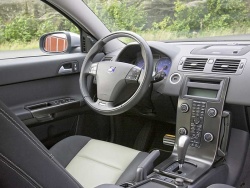 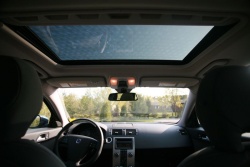 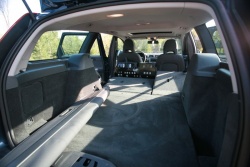 2009 Volvo V50 (top) & 2008 Volvo V50. Click image to enlarge |
In 2009, Volvo made a sporty ‘R-Design’ variant of their wagon available. It got the turbo engine and AWD, and also featured various cosmetic upgrades to the wheels and bumpers, new colour schemes and a sports-tuned suspension that geared it towards family or activity-minded driving enthusiasts.
Note that after 2010, models with manual transmissions and AWD were discontinued.
What Owners Like: Owners tend to rate refinement, engine performance (with T5 powerplant), ride and handling, interior styling and a feeling of safety and confidence the most highly on their S40s and V50s. Al-wheel drive (AWD) traction during winter months is also highly rated, especially when the model in question is wearing winter tires. The rain-sensing wipers are typically enjoyed, as is what some owners call a ‘just-right’ size that balances interior space, agility and maneuverability.
In all, many owners seem to be benefiting from an upscale, confident and comfortable car. The simplistic Scandinavian interior design is, apparently, pleasant and user friendly. Many owners report satisfaction with the fuel mileage from the 2.4L non-turbo engine, too.
What Owners Dislike: Limited cabin storage, fuel mileage and blind spots are among the most common owner-stated complaints. Some owners also dislike the S40 and V50’s desire for premium gasoline, and stiff (sporty) ride on models with the sports suspension, too. Several owners also wish for higher performance from the up-level ‘premium’ stereo option, and several more admit that there are sportier and more prestigious premium models in the price range.
Here’s a link to owner reviews of the S40 and V50:
Volvo S40 Owner Reviews on autoTRADER.ca
Volvo V50 Owner Reviews on autoTRADER.ca
Volvo S40 reviews on CarReview.com
Common Issues:
When test driving a used S40 or V50, check for proper operation of the external temperature readout, climate control system and all door-mounted controls, including the power locks, mirrors and windows. Some owners have reported door-mounted controls going dead at random, which could be pricey to repair. Other electrical glitches include failure of the power outlets and seat warmers. Plan to spend a few minutes double-checking proper operation of everything inside the S40 or V50 that runs on electricity.
Ensure the remote keyless entry system works as expected, and give the audio system a bit of attention to confirm proper operation, too. Some owners have reported issues with the factory radio head-unit going ‘dead’ at random. In most of these, a few ‘power on, power off’ cycles fix the issue temporarily.
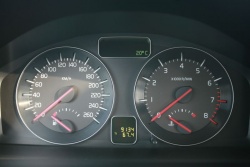 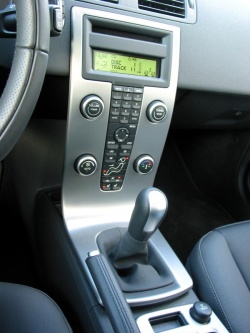 2008 Volvo V50. Click image to enlarge |
Look for any “Check Engine” lights or warning messages that may appear in the instrument cluster or driver computer. Note that not every sensor-related issue will cause a warning message, so an electronic scan of the vehicle’s computer brain by a mechanic is advised ahead of your purchase. The up-front cost of this scan could save you money down the line if an expensive sensor is failed or failing.
Note that a humming sound or vibration on AWD models, particularly from the rear of the vehicle at low to moderate speeds, could be a symptom of a problem with the AWD system.
Also note any harsh shifting or slipping from models equipped with the automatic transmission, too. If any of the above are apparent, have a mechanic determine why, or move to another unit.
Some owners report misfiring, lumpy acceleration and hesitation in some situations. This appears to be caused by a combination of factors – including the use of non Volvo-recommended replacement spark plugs, fueling with ‘regular’ gasoline instead of premium, and possible issues with the factory fuel pressure regulator system. To help avoid such drivability issues, be sure to maintain your S40 or V50’s engine with Volvo-approved parts, and feed it premium gasoline.
Unless you’re familiar with the maintenance history of the model you’re considering, a full fluid change and tune-up is a good idea ahead of your purchase, just to be safe. A Volvo-trained mechanic can help assess the needs and condition of the car you’re considering, and should look at its underside in the air to inspect it for leaks or worn suspension bushings.
Have the mechanic inspect the condition of the tires, wheel bearings and brakes on the car you’re considering, too. Many owners have reported ‘premature’ wear of these components, though a portion of the wear of these consumable parts will be caused by driving habits and locale. As some owners have had to replace broken motor mounts, these should be inspected, too.
Finally, avoid any turbocharged model that’s been heavily modified, especially if the owner / seller has ‘turned up’ the boost for additional performance. This could make your Volvo more fun to drive, but it could also take years off of its life.
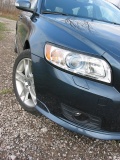 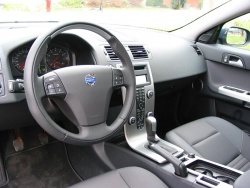 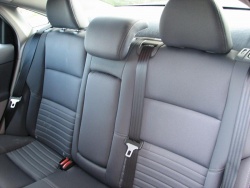 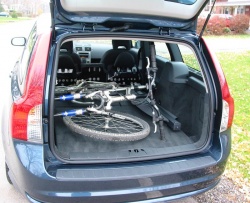 Volvo S40/V50, 2005–2011. Click image to enlarge |
Forum regarding owner-stated S40 issues:
http://www.volvo-forums.com/f67-2g-20045-s40-forum.htm
Forum regarding owner-stated electrical problems on V50:
http://townhall-talk.edmunds.com/direct/view/.f0fc9ef/0
|
Related Articles: Manufacturer’s Website: |
The Verdict: Like most used premium vehicles, the S40 and V50 aren’t without their issues. Note that despite the lengthy list of checks we advise here, a look at the usual sources indicate that this is a car enjoyed for many thousands of kilometres by many thousands of owners without issue. Protect yourself with any extended warranty coverage available, and consider a pre-purchase inspection at a Volvo garage absolutely mandatory. If the model you’re after checks out, you’ll join a group of owners that enjoys a unique, comfortable and upscale compact premium.
Recalls: http://wwwapps.tc.gc.ca/Saf-Sec-Sur/7/VRDB-BDRV/SEARCH/SearchResult.aspx?lang=eng&mk=1838!4876&md=S40&fy=2005&ty=2011&ft=&ls=0&sy=0
Crash test results:
IIHS: “GOOD” rating (S40)











